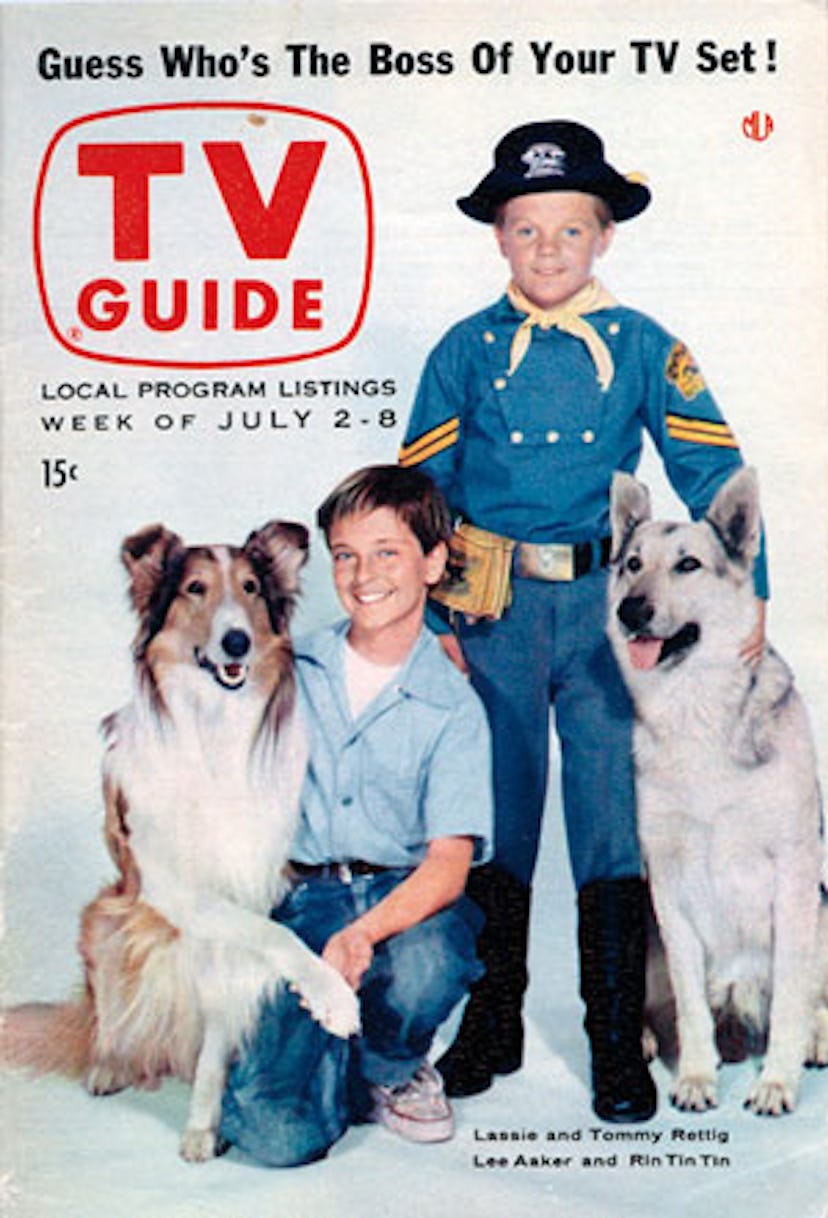BY THE TIME I WAS FIVE, six, or maybe seven years old, I understood the hard facts of rivalry, thanks to two famous dogs. I was still innocent in most ways of the world, but I knew the biggest stars of the period were Lassie and Rin Tin Tin, canine actors with hit television shows that had both debuted in 1954; I knew they were bitter rivals; and I knew I couldn’t love them both. I had to align myself with one or the other, to define myself as either a Lassie or a Rin Tin Tin person. To be honest, the choice had almost been made for me already. I was one of two girls, and my sister, somehow, had been designated the girly girl. I, therefore, was the tomboy. She wore flounces; I wore jeans. She had long hair; I had a pixie cut. The architecture of our family seemed to have room for just one of each sort of girl. And so it seemed inevitable that my sister would be the Lassie girl and I would be the kid who was in love with Rin Tin Tin.
Popular culture has always roiled with rivalries. We take sides, and the side we take says something about us. It’s not only a matter of individual tastes: Each era shapes itself around those schisms. Were you a Shakespeare person or a Christopher Marlowe person? Rolling Stones or Beatles? Bette Davis or Joan Crawford? (Of whom Davis sniped: “She has slept with every male star at MGM except Lassie.”) Maybe I oversubscribe to the idea that popular culture is personal shorthand, but over the years I’ve had real conflicts with friends over those choices. When I was in high school, you were either a Joni Mitchell or a Judy Collins person. To me, the answer was so obvious—Joni Mitchell, of course!—that when my best friend announced she was for Judy Collins it felt as if she had been unmasked as an alien. Did we resume our friendship? Yes—eventually—but there was something about her from that point on that I simply couldn’t understand.
Unlike dogs in the movies today, usually cast as comic relief, dogs in the Fifties were presented as heroes and role models. Strange as it might sound, in the late Fifties and early Sixties, declaring your allegiance to either Lassie or Rin Tin Tin was not an inconsequential thing. As with all the liveliest rivalries, the two stars had a lot in common. They were, obviously, both canines. They were talented at helping their masters—who, in both cases, happened to be young, fatherless boys—out of scrapes. They were both adept at the kind of persistent, valorous, devoted love only a dog can have for its owner. But then came their differences. Rin Tin Tin was male; Lassie a female (well, the character of Lassie was female, but the dogs who played the role were always male). Rin Tin Tin was an Army dog; Lassie lived on a farm. Rin Tin Tin never shied away from a fight; Lassie was a negotiator. (Lassie’s producers liked to say that their dog could do everything Rin Tin Tin could do except snarl.) Rin Tin Tin was noble; Lassie was tender. Rin Tin Tin never flinched; Lassie always looked like she was about to cry.
Of course, you could dismiss this as a competition between a boy’s dog and a girl’s dog, but where would that leave me, the girl who loved Rin Tin Tin? And I wasn’t alone: Many of Rin Tin Tin’s most avid fans were young girls. In any case, an interesting matchup doesn’t just divide along gender lines: If Rin Tin Tin’s fans were all boys and Lassie’s were all girls, it wouldn’t have been a rivalry; it would have been a checklist question. Instead, what makes it catch hold is that a rivalry offers a sort of surrogate identity, a way to explain how you fit into the world and who fits into that world with you—and who doesn’t. In my case, I was shouldered aside in my affection for Lassie by my girlier sister, but I did feel more drawn to Rin Tin Tin’s ruggedness and solemn manner. That was it. I quietly signed on as a Rin Tin Tin person; that was who I was as a little kid, and who I’ve seemingly continued to be.
Rivalries never die. Many decades after it felt urgent to choose him, I started writing my new book about Rin Tin Tin [out September 27 from Simon & Schuster]. It was interesting to mention the project to friends who had also grown up when these dogs reigned on TV. Half of them would draw up to full height and say, with a bit of an edge, “Well, I was a Lassie person.” The other half would exchange with me the knowing glance of those who had made the same important choice, and there was nothing more we needed to say.
TV Guide: Pamela Cook
